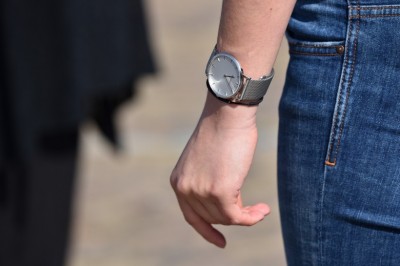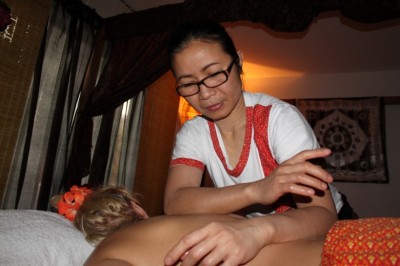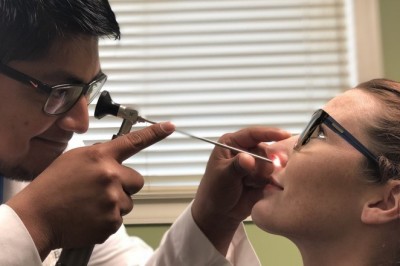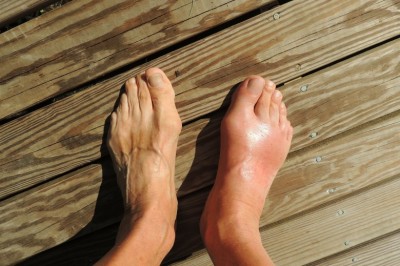Why Do My Joints Pop And Crack?
One of the most common questions people often ask me is"why does my neck crack?" or "why does my knee joint pop? There are usually three main reasons why a persons joints will make those cracking and popping sounds. Perth chiropractor Stacey Burke discusses why joints pop and crack.
It is not unusual hear somebodys knee joint crack, or crack their knuckle joints, or their neck joints pop. Maybe when they walk, their ankle joint cracks, their knee joint grinds or their ankle clicks. There are different reasons why a persons joints will crack, pop and grind like this. This is a general overview of three common reasons why joints snap, crack and pop.
Gas Release
All the joints in our bodies have a water balloon like structure that surrounds them called the joint capsule. The capsule is filled with synovial fluid, which along with containing nutrients for the joints, lubricates the joint and helps reduce friction. Inside of the synovial fluid is a variety of gases including nitrogen, oxygen and carbon dioxide. When the joint is stretched beyond its normal range of movement, the pressure inside the joint capsule changes, this pressure change creates a vacuum effect and forms a bubble from gases dissolved in the fluid. This change in pressure causes the bubble to collapse, and gas is quickly released producing the cracking or popping sound within the joint. The gases must build up inside the fluid again, in order for the joint to make the cracking or popping noise again. This is why your knuckles might crack, but it takes a little while before they will pop again.
Moving Joints
Movement between two bones forming a joint, and the attached ligaments and tendons of that joint can be another source of the joint cracking, popping or snapping. As the tendons and ligaments are in motion and their positions continuously changing, in some people the tendon may click over a bony prominence or outer knee or ankle bone and move a little bit in and out of place. As the tendon moves from one position to another it may snap" back to its alternate position. Sometimes after exercise your ligaments or tendons may tighten, and as you begin to move the knee, ankle or other joint may crack or make a popping sound due to this reason
Arthritic Joints
Smooth cartilage surrounds the ends of bones in a normal healthy joint. If the joint surfaces become rough or damaged, some of the cracking or grinding noise may result from the friction between the two bone surfaces rubbing on each other. This can also be painful for some people as the damage becomes worse over time.
Is cracking joints bad for you? Generally speaking there have not been any conclusive studies saying there are any negative long term effects of cracking your knuckles or other joints. Over manipulating your joints or the feeling that you constantly need to crack your joints may be evidence of an underlying mechanical problem or joint stress.
That said if you are starting to experience pain when you move your joints, and there is snapping, crackling or popping, than you should see a health care professional for a more in depth examination of your specific problem.
One of the positive benefits of increased joint movement may occur after a chiropractic adjustment. The response of certain sensory receptors around the joint, called the Golgi Tendon Organs, sends information back to the brain about joint function and how much tension is on the joint or muscle. Often times an adjustment helps to "reset" this tension and creates the feeling of looseness or relaxation. Some other receptors called mechanoreceptors are in discs, tendons, ligaments and muscles of the spinal joints. The cerebellum primarily functions as a result of input from these mechanoreceptors in the joints and muscle spindles. When this input is decreased, the cerebellum may function at a lower level resulting in the inability to perform precise movements, or maybe lose muscle tone, or maintain normal posture. Chiropractic adjustments help restore normal movement and firing of these joint nerve receptors. Proper joint movement and sensory feedback is very important to the healthy function of the cerebellum and nervous system.
This article is meant as a general overview and for informational purposes only and should not be used to replace the advice of a qualified professional. It is my goal goal for the public to better understand their health and general wellbeing. I urge you to consult with a qualified health care provider for diagnosis and for answers to your individual health questions.
Our goal is to support you and your family improving and maintaining optimum health and wellbeing. For more interesting articles go to West Coast Family Chiropractic


























